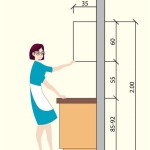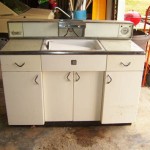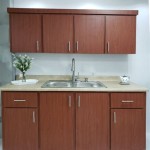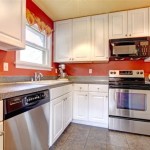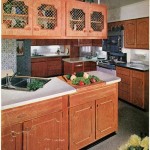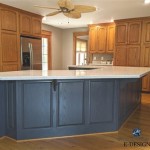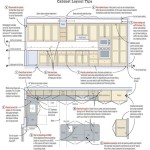Essential Aspects of Kitchen Wall Cabinet Brackets
Kitchen wall cabinet brackets play a crucial role in supporting and securing your cabinets to the wall, ensuring their stability and functionality. However, choosing the right brackets and installing them correctly is essential to maintain the longevity and safety of your cabinets. Here are some key aspects to consider:
Types of Wall Cabinet Brackets
There are various types of wall cabinet brackets available, each with its own advantages and applications. Some common types include:
- French Cleat Brackets: These L-shaped brackets fit into a groove cut into the back of the cabinet and the wall, creating a strong and concealed connection.
- European-Style Brackets: These brackets are adjustable, allowing you to level and align cabinets with precision. They are typically used with cabinets that have concealed hinges.
- Z-Brackets: These heavy-duty brackets are suitable for supporting heavier cabinets. They are typically made of steel or aluminum and provide ample strength.
Choosing the Right Brackets
When choosing wall cabinet brackets, consider these factors:
- Cabinet Weight: Select brackets that are rated to support the weight of your cabinets, including their contents.
- Cabinet Construction: Some brackets are designed for specific cabinet materials, such as wood or metal.
- Wall Type: The type of wall (e.g., drywall, studs) will determine the appropriate bracket.
- Aesthetics: Concealed brackets are preferred if you want a clean and seamless look.
Installing Wall Cabinet Brackets
Installing wall cabinet brackets requires precision and proper techniques to ensure safety and durability:
- Locate Studs: Use a stud finder to locate studs in the wall where the cabinets will be mounted.
- Mark Bracket Positions: Measure and mark the positions of the brackets on the back of the cabinet and the wall.
- Mount Brackets: Secure the brackets to the studs using suitable fasteners (e.g., screws).
- Hang Cabinets: Lift the cabinets onto the brackets and engage them into place.
- Level and Align: Use a level to ensure the cabinets are level and flush with each other.
Caution: Installing heavy cabinets requires additional support. Consult a professional if you are unsure about the proper installation or have concerns about the weight.
In conclusion, kitchen wall cabinet brackets are essential for ensuring the safety and functionality of your cabinets. By choosing the right brackets, installing them correctly, and considering the crucial aspects outlined above, you can create a durable and visually appealing kitchen that will last for years to come.

Wall Unit Fitting Adjustments Diy Kitchens Advice

Wickes Cabinet Hanging Bracket And Plate 59 X 50mm 10 Pack Co

Hafele Nylon Cabinet Bracket Plate Toolstation

Wall Unit Bracket Concealed Hanging Plate Kitchen Hanger Cupboard Cabinet

X2 Kitchen Wall Cabinet Hanger Mounting Plastic 29000740

Hanging Bracket Wall Hanger Plate 63mm Kitchen Cabinet Cupboard Mounting Overhead 150kg Load Capacity Fixing King

Goodhome White Wall Hanging Bracket Kit W 175mm Diy At B Q

Heavy Duty Wall Cabinet Mounting Adjustable Brackets Hangers Debonair Joinery S

X2 Koala Cabinet Hangers Spider Concealed Dowels Mounting 29036910

Concealed Universal Spider Brackets For Kitchen Wall Unit Cabinets
Related Posts


